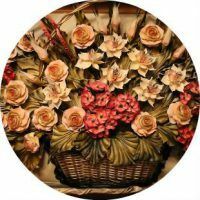
Pictures from the skin are not new creativity, although it can not be called widespread either. And the point here is not that it is complicated, even on the contrary. The rare occurrence of such articles is easily explained by their nonuniversality. They can look beautiful on their own, but within the framework of this or that interior they will stand out as a thorn. Such compositions fit only in the natural decor of the room.
The process of creating
To work out any composition of this kind of skin, you will need the following materials: directly, the skin itself, the canvas on the frame or on cardboard, maybe acrylic paints, if you want to paint the skin, Glue, sharp scissors and a penknife. You can use oil paints, but, unlike acrylics, which dry in a few minutes, the oil can dry out and a few days, which will permanently stall the whole process.
The skin you can either purchase separately, or let the cloak hanging in the wardrobe for the benefit of creativity. The main thing is that the material is relatively usable, with a uniform surface.
Elements of the picture
Pictures from the skin are composite, not integral compositions. First, an ordinary sketch is done. On it, larger elements are made and immediately applied to the painting canvas. Next comes a series of medium-sized and small elements.
The easiest way for beginners to work on floral compositions, where landscapes and still-lifes are more difficult.
Given that the theme of our composition is flowers, it is worth considering that each flower is also a composite hand-made article consisting of separate elements - petals, stems and leaves. All this will have to be cut out separately and scrupulously collected together. To simplify your task, you can use stencils created by yourself.
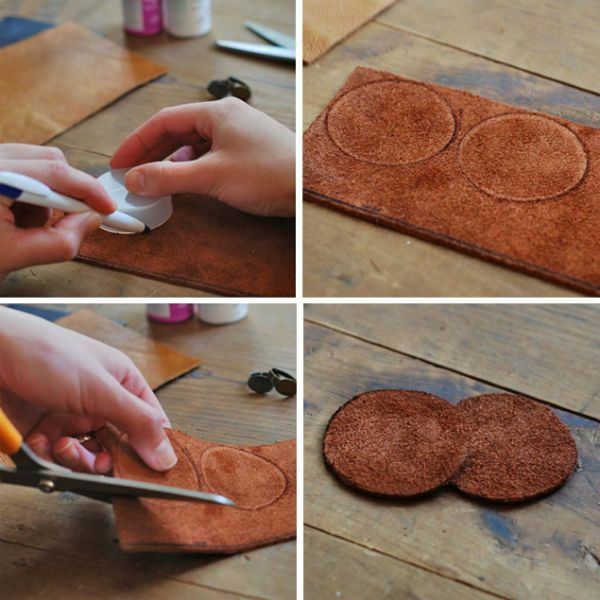
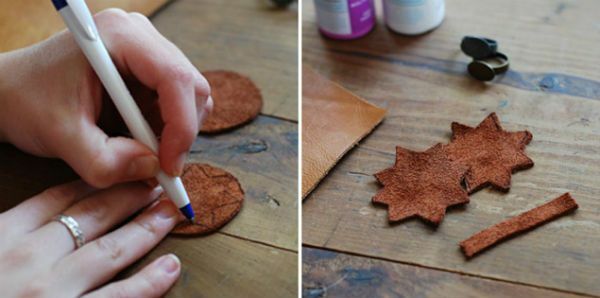
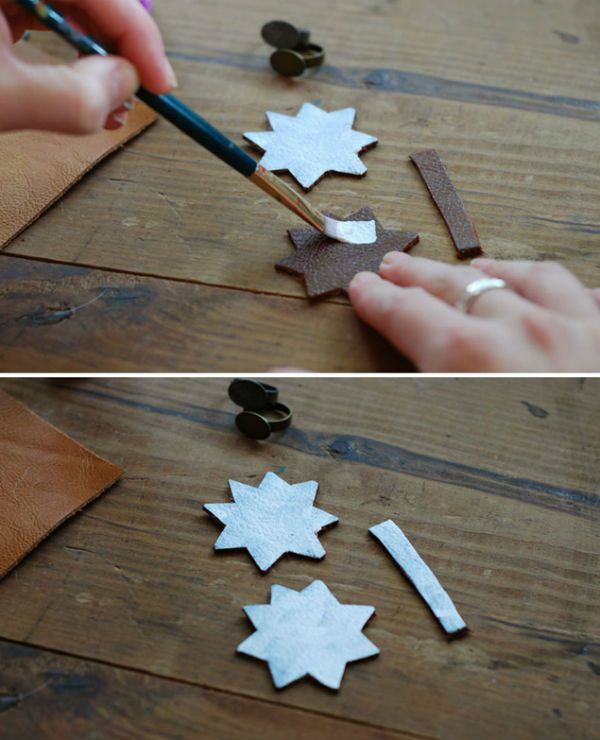
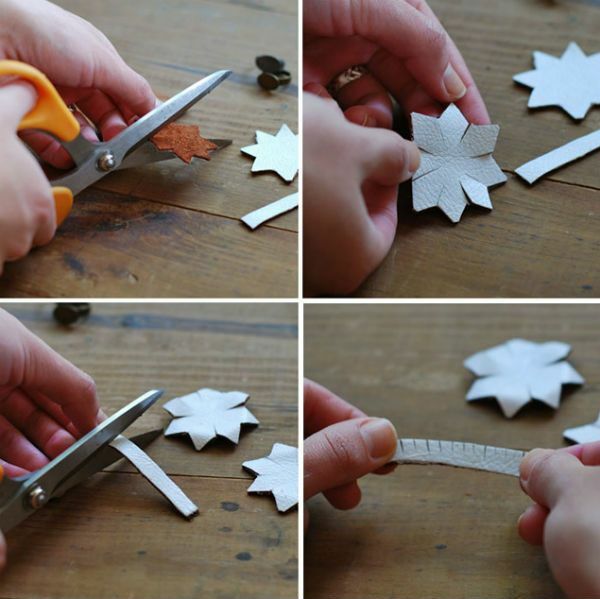
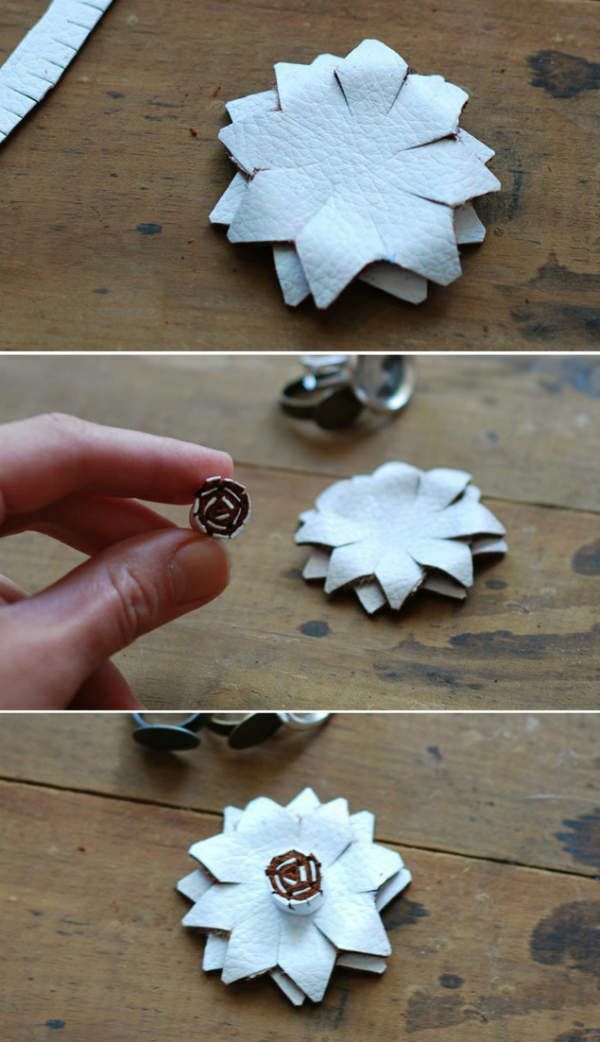
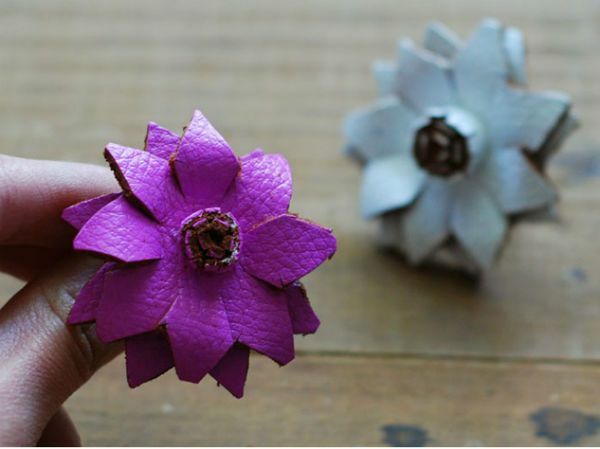
First, prepare for each flower petals from the skin.
If you want to achieve maximum realism and similarity with real colors, you need to hold the petals over an open flame so that they becomeconvex. It is also appropriate to scratch the strips with a hot needle.
The leaves are made according to the same principle.
After all the elements are ready and processed, go to the painting. The paint can be applied in several layers and approaches, simulating the transitions of tones and light and dark areas.
Assembling a flower from the skin depends on what it is for the flower. So, for a simple daisy, it is enough to sew or glue the core, but in a complex variant all the petals are attached to the base or sewn, and then the junction site is hidden under the core.
In the case of a rose, the flower assembly begins with a core, to which the petals are gradually and proportionally added.
It's better to work with glue, and not stitch the composition. So it will be more accurate. Use quick-drying glue, designed specifically for working with the skin.
When all the elements are worked out, it's time to transfer them to the canvas, also gluing. Before that, you can paint something on the canvas, for example, the same flowers, or simply cover it with a layer of light acrylic, making a background.
The skin can also act as a background. It can be covered with a canvas.
Use the following photo to create different colors and leaves.
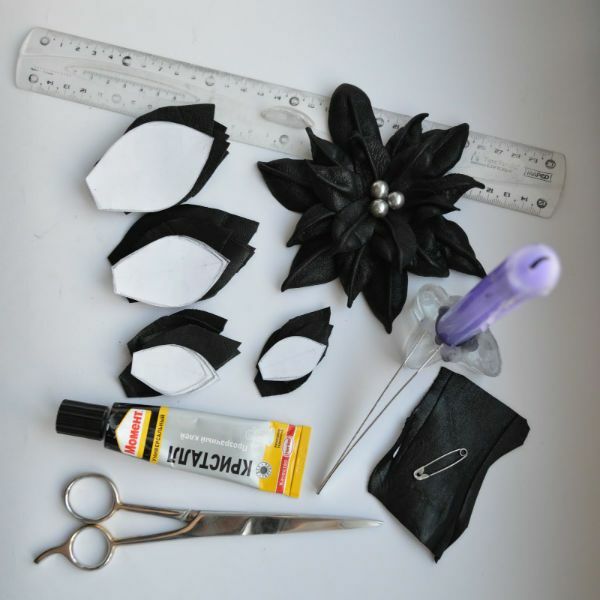

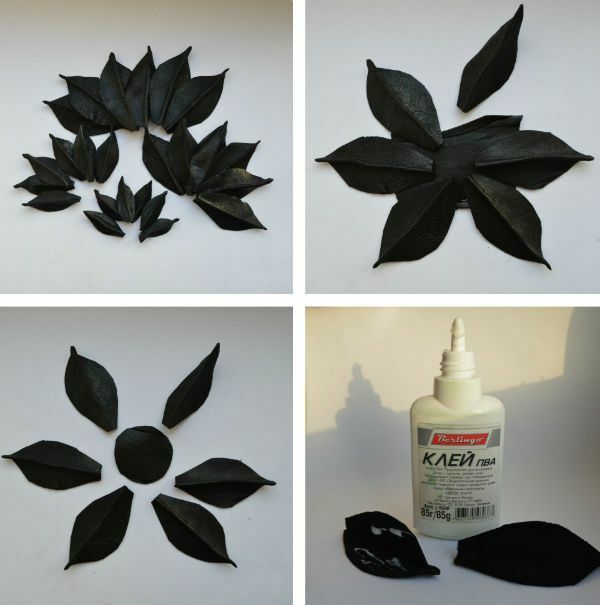
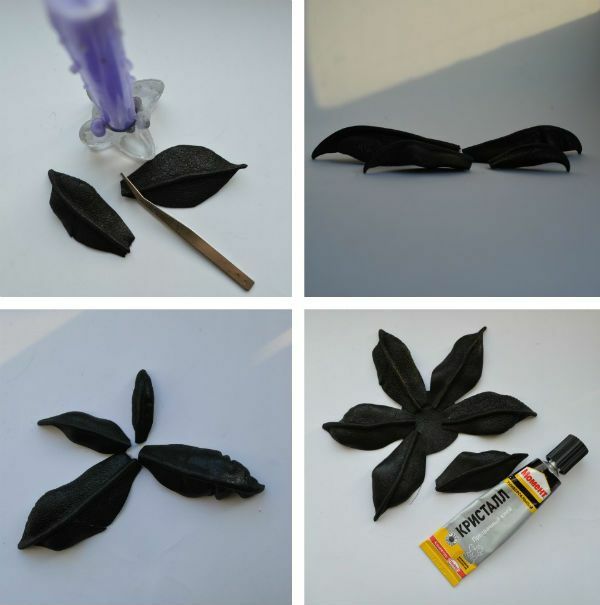

The second version of the compilation of a flower.

To make the petals thin, they must be impregnated with glue and glued.
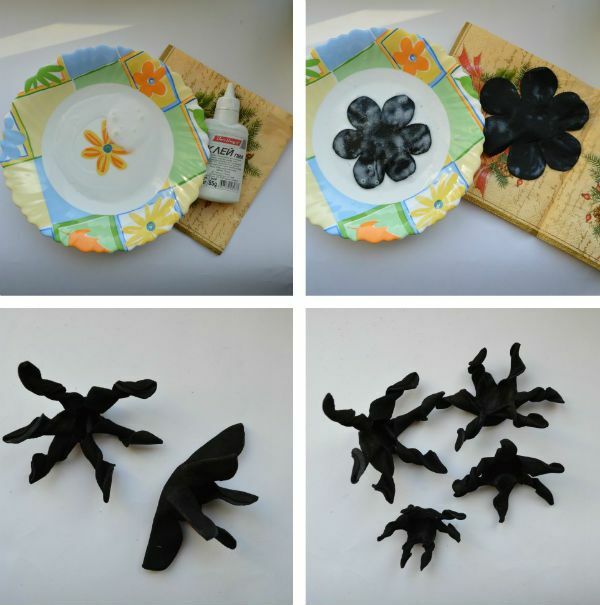
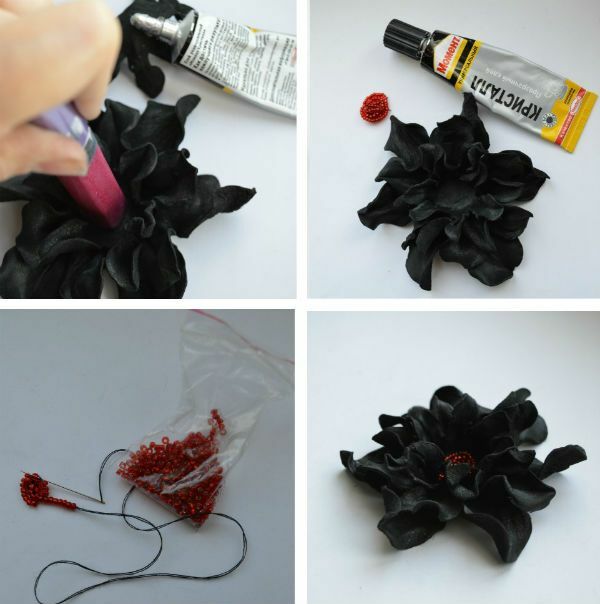
A rose made of leather is made in a similar way.
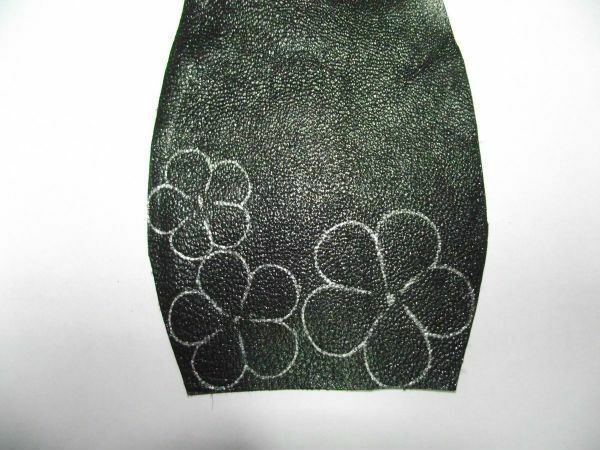
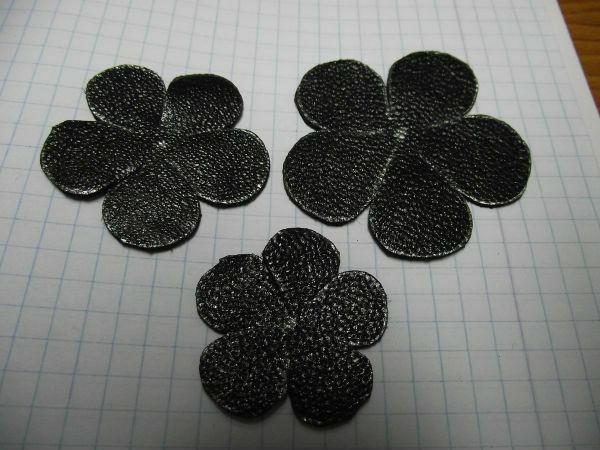
You need to burn the edges and hold each petal over the fire so that it becomes convex.
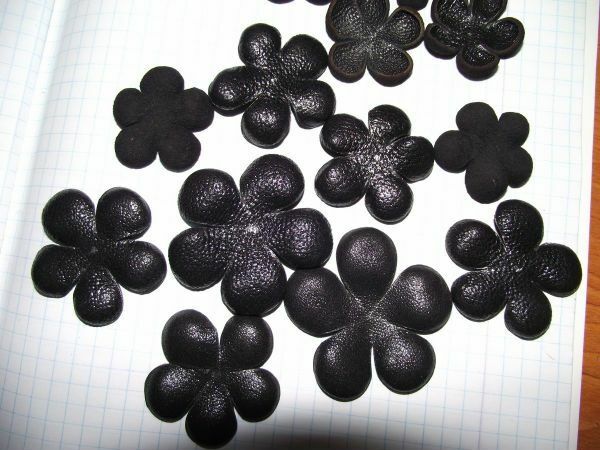
To create a billet, fix the petals with glue.
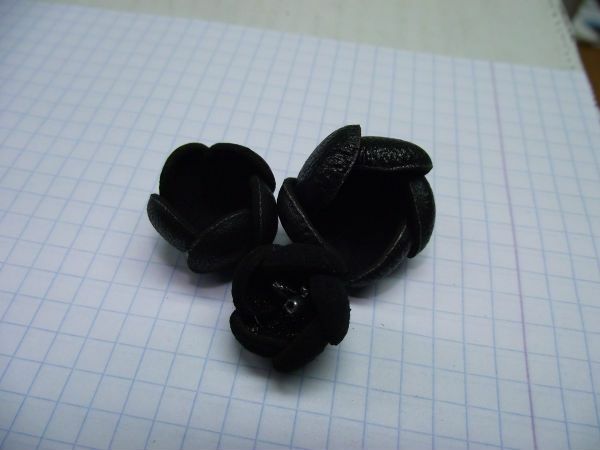
And for the opened flower make several blanks together.
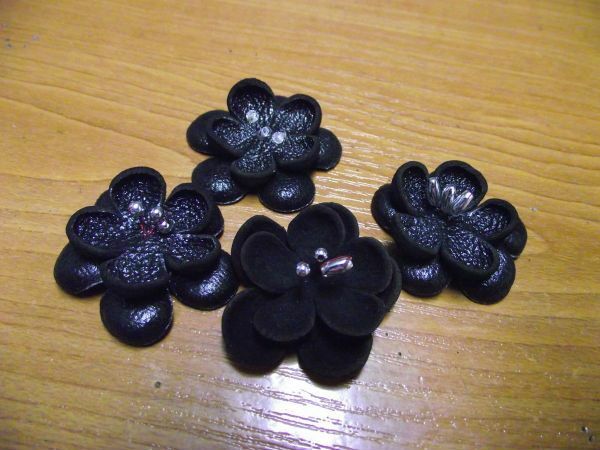
To get a three-dimensional rose, you need to combine the bud and the opened flower.

The resulting flowers can be transferred to the canvas in any order.
